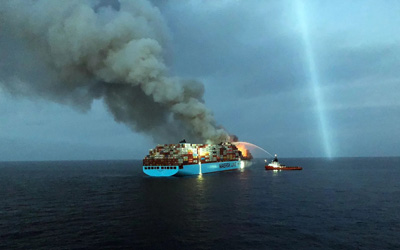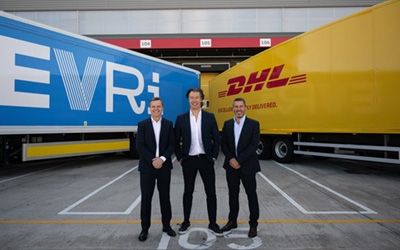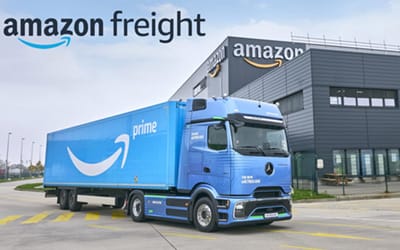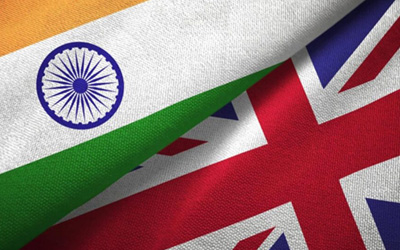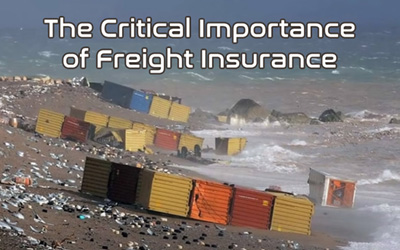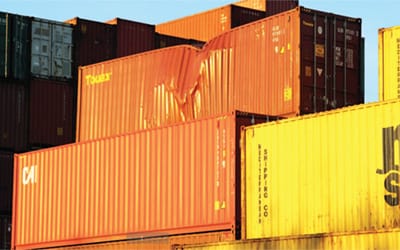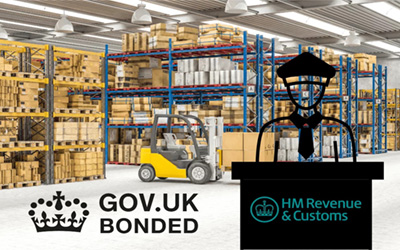Container Ship Rescues: Overcoming Challenges
Enormous container ship are the lifeblood of global commerce, transporting goods across the world’s seas. Yet, when these giants find themselves in peril, as recently seen with the Ever Given and Ever Forward, the question arises: How can they be saved from the clutches of danger? In this compelling account, we explore the heroic efforts of salvage experts who come to the rescue when these maritime behemoths face adversity.
Perilous Nights and Heroic Salvage
Imagine a stormy night in the summer of 2010, with rain fiercely pelting the windows, the sea violently assaulting the steel hull of a grounded container ship, and the wind roaring with primal power. This was the dire situation faced by the Kota Kado, a massive 230-meter-long container ship that had run aground near the port of Hong Kong. The crew had evacuated, leaving salvage master Captain Nick Sloane alone on the bridge, clad in his life jacket, bracing for the worst.
Captain Sloane and his small team of salvage experts had arrived in the South China Sea, determined to rescue the Kota Kado container ship. When the forecast predicted a typhoon approaching, Captain Sloane made the bold choice to remain on board overnight with a skeleton crew.
His objective was clear: he needed to experience how the vessel responded to the relentless storm, identifying its vulnerable points to inform their next course of action. It was a decision that would prove to be a very close call. Reflecting on that perilous night, Captain Sloane recalls, “We nearly lost the container ship that night.”
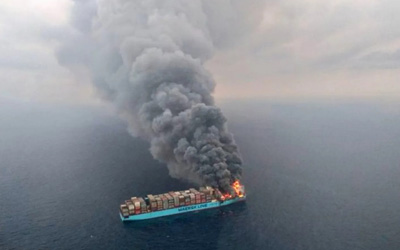
The Perils of Cargo Container Ships
Container ships, responsible for transporting approximately 90% of the world’s trade, do not always reach their destinations without incident. The Safety and Shipping Review by insurance giant Allianz reports that in 2021, 27 container ships were lost in major incidents, with 357 recorded in the past decade.
These massive container ships face fires, collisions with rocks, reefs, and sandbars, as well as mechanical failures. But the valuable cargo container ships carry means that their owners almost always opt for rescue efforts when feasible, as these container ships can be worth hundreds of millions of dollars.
In such dire situations, shipping companies turn to a group of specialists known as “salvors.” These maritime experts have witnessed the extraordinary at sea, and their services are invaluable when it comes to saving stranded or imperilled ships. One notable example is the successful rescue operation of the massive Ever Given container ship, which ran aground, blocked the Suez Canal, and sent shock waves through global supply chains last year.
But when a colossal container ship weighing tens or hundreds of thousands of tonnes becomes trapped, the question remains: How can it be freed?
Captain Sloane, now a director at Resolve Marine Group, was on his way home from a World Cup match in South Africa when he received the call about the Kota Kado’s predicament. He flew to Hong Kong the next day.
The container ship had struck a reef, creating a breach in its side. Two cargo holds began filling with water, and the vessel slowly descended until it eventually ran aground about 25 nautical miles southwest of its intended destination. Her bow was embedded in the seabed, leaving her trapped. As more water flooded the ship, it began to sink.
Many doubted that she could be saved at all. “A lot of the surveyors said, ‘OK, the ship’s completely lost, get ready for a wreck removal contract,'” recalls Sloane. However, he believed she still had a fighting chance.
“She kept on sinking, and the bow, literally every day, sank another half-a-meter to a meter,” he says. “It was touch-and-go.”
A Race Against Time
Sloane and his team devised a plan to reduce the vessel’s mass and pump out as much water as possible. This involved the use of lighters—barges equipped with large cranes. Fortunately, these barges were readily available in Hong Kong, as cargo unloading often involved their use.
Sloane aimed to remove as much cargo as possible, and ultimately, more than 1,200 individual containers were extracted. This operation was arduous and time-consuming, especially given that the heaviest containers were typically at the bottom, making their removal more challenging.
Another critical element of the rescue was the use of giant snorkels. These snorkels, essentially large tubes, were welded onto hatches on the deck above and extended into the ship’s interior.
Large pumps were placed underwater at the bottom of one of the cargo holds, and a team of divers connected them to hoses running through the snorkels. The pumps ran tirelessly to prevent water from filling the ship’s engine room, which housed the most sensitive and costly machinery.
By extracting massive volumes of water from the hold, the salvage team managed to fill some of the ship’s ballast tanks with air, enabling her to re-float. This delicate operation had to be carefully timed to avoid tank ruptures. After weeks of strenuous work and enduring two typhoons, the Kota Kado was saved and towed to a shipyard for repairs. Remarkably, she continues to sail today under a different name.
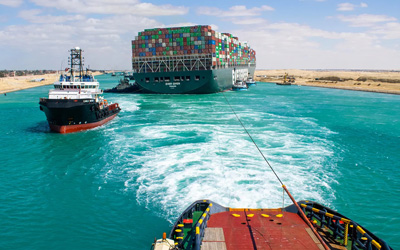
Nature's Fury and Salvage Strategies
When Container ships find themselves in unintended locations, such as stuck in mud or wedged against rocks, the forces of nature can wreak havoc on them. Heavy storms, like those faced by the Kota Kado, pose significant threats.
Rosalind Blazejczyk, managing partner and naval architect at Solis Marine Consultants, likens ships in these predicaments to paperclips; they can snap when subjected to repeated bending. She explains the dangers of grounded ships being lifted or twisted by successive waves, which can relentlessly batter a ship, causing it to buckle. To reinforce and stabilize ships, salvage teams sometimes weld massive girders to their decks.
To manage these complex situations, salvage experts often employ three-dimensional computer models of the distressed ship. These models help assess the effects of external forces on the vessel and can provide valuable insights into potential structural vulnerabilities. In some cases, container ship companies maintain emergency response services with pre-created ship models for rapid deployment.
Throughout salvage operations, sensors placed on the ship’s hull monitor its movements and flexing. Data from these sensors feeds into the computer model, allowing salvors to identify potential weaknesses. Additionally, lasers trained on the stricken ship offer precise monitoring of its movements.
While tugboats play a crucial role in freeing grounded ships, they alone are usually insufficient due to the formidable “ground reaction force” opposing their efforts. In cases where significant obstacles impede a ship’s liberation, teams must resort to lightening the vessel or clearing the sediment that ensnares it.
The Urgency of Salvage Operations
Time is of the essence in salvage operations, especially when a grounded ship obstructs busy waterways. The Ever Given’s blockage of the Suez Canal in March last year serves as a stark reminder of the importance of swift action. Six days of obstruction led to a queue of more than 200 vessels, stretching over 60 miles, as they waited for passage through the canal.
Such groundings that turn into blockages have far-reaching consequences. Leendert Muller, managing director of Multraship, recounts the grounding of the CSCL Jupiter, a container ship, outside the port of Antwerp in 2017. Antwerp, one of Europe’s largest ports, plays a pivotal role in continental trade. It just goes to show how human error can bring thing to a grinding hault, but on the other hand humans are the life savers who get things going again. You can rely on SARR Logistics UK to keep you posted about all the latest news and how to avoid delays in the industry we take the worry out of shipping.
With a legacy built on trust, backed by extensive experience, a global network, and a customer centric approach, SARR Logistics UK emerges as the ultimate partner for all your supply chain mapping needs. We are in touch with the latest cloud based systems to keep us well informed of all the latest news.
If you would like to know more reach out to us today and experience a seamless, efficient, and dependable shipping solution tailored to elevate your business. For further inquiries and to explore how SARR Logistics UK can help you save money contact our team. We are always happy to help.![]()


